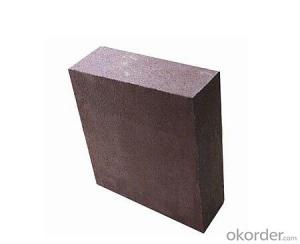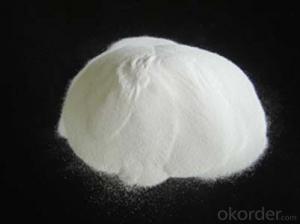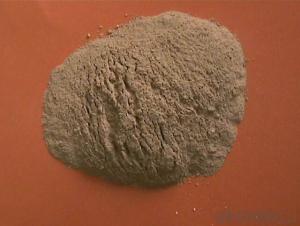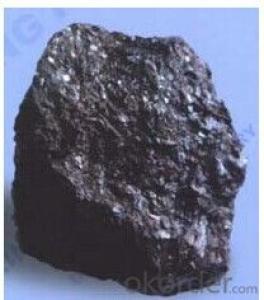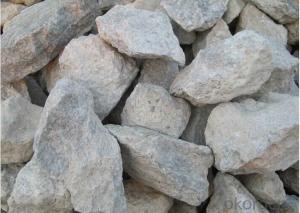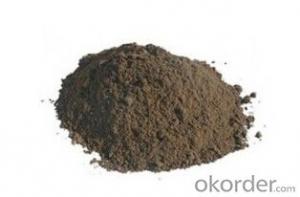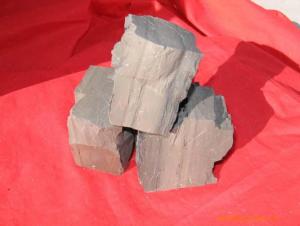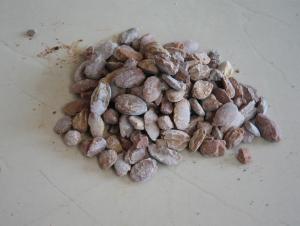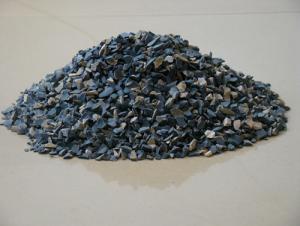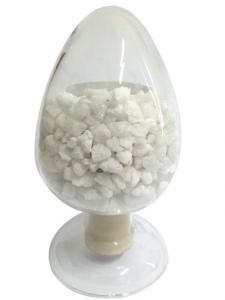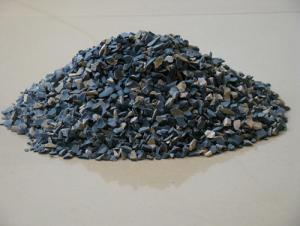Raw Materials for Refractory:Direct-Binded Magnesia-Chrome Bricks
- Loading Port:
- China Main Port
- Payment Terms:
- TT OR LC
- Min Order Qty:
- -
- Supply Capability:
- -
OKorder Service Pledge
OKorder Financial Service
You Might Also Like
Made from highgrade magnesite sinter and chrome oxide by high pressure shaping and temperature firing. It is characterized as having high direct-bonding rate and large crystals, good thermal spalling resistance and slag resistance.
Brand | Standard Value | ||||||
Index | MZ-87 | MZ-89 | MZ-91 | MZ-95 | MZ-96 | MZ-97 | MZ-98 |
MgO≥ /% | 87 | 89 | 91 | 94.5 | 95.5 | 96.5 | 97.5 |
CaO≤ /% | 3 | 3 | 3 | 2 | 2 | 2 | 2 |
Cold Crushing Stength≥ /MPa | 39.2 | 49 | 58.8 | 39.2 | 39.30 | 39.2 | 44.1 |
Apparent Porosity≤ /% | 20 | 20 | 18 | 20 | 20 | 18 | 18 |
Refractoriness under Load≥/ ℃ | 1520 | 1540 | 1550 | 1650 | 1650 | 1680 | 1700 |
This product belongs to new chromefree basic refractories for large rotary kilns developed by our company. It is produced with high quality synthetic spinel materials and special technical process. The product is characterized by high crushing strength, good thermal shock resistance, good thermal creep, high refractoriness under load, also has the characteristics of direct bonded magnesia-chrome brick (easily adhering the furnace crust), and has solved the problem of environment pollution of sexavalent chrome forming during the use magnesia-chrome brick in cement kiln.
The development and application of pleonaste brick conform to the trend of magnesitechrome brick withdrawing from the historical stage in the cement industry, meet the demand of chrome-free basic refractories in cement industry under the new environmental-friendly situation.
Application:
It is widely used in all kinds of rotary kiln, the sleeve kiln, shaft kiln and lime kiln, etc
- Q: What is the fire resistance thickness of the thin fire-retardant coatings?
- Our thin steelwork fireproof coatings: the fire resistance is 2.5 hours, the thickness is 4.9 mm, the fire resistance is 2.0 hours, the thickness is 3.5 mm, the fire resistance is 1.5 hours, the thickness is 1.75 mm, the fire resistance is 1.0 hours, the thickness is 1.17 mm.
- Q: The mechanism and function of antioxidants in carbon containing composite refractories are briefly described.
- 3, the selection principle of antioxidant and its thermodynamic and kinetic mechanism31 selection principles of antioxidants:(1) according to the thermodynamic data and the conditions of use, the possible condensed phase and the vapor pressure of each gas phase are determined;(2) compare the size of each coacervation and oxygen affinity, and the possibility of reaction with CO.(3) the influence of various reactions on the microstructure of brick was analyzed.The thermodynamic and kinetic mechanism of 3.2 antioxidantsFrom a thermodynamic point of view, at the operating temperature, the additives or additives that react with carbon react with oxygen more closely than carbon and oxygen, giving priority to carbon oxidation, thus protecting carbon;From the analysis of dynamics point of view: the compound additive with oxygen and carbon monoxide reaction changed the microstructure of carbon composite refractory materials, such as increasing the density, blocked pores, hinder the diffusion of oxygen and reaction products.
- Q: Who can introduce the difference between galvanized fireproof?coatings and steel structure fireproof materials?
- There is no difference between them because they are the coating with the same texture. But generally galvanized treatment is not necessarily needed for brushing fireproof coating. Fireproof coating and galvanized surface have relatively poor bond strength. So it is advisable to bursh trasitional lacquer or micaceous iron on galvanized surface.
- Q: As for fireproofing material rock wool and glass wool, which one is better?
- Rock wool board and glass?wool?board are a kind of new construction thermal insulation material, it's widely applied in construction and has replaced traditional thermal insulation material to some degree. With the gradually deepening study of rock wool board, glass wool board, we can find that these insulation materials have advantages in many aspects but there are also many deficiencies, particularly there exists a lot of controversy about the impact on the human body. The production process of rock wool board and glass?wool?board usually includes: after melting in high temperature of rock or glass, inorganic fiber is produced by high-speed centrifugation equipment, and at the same time add binder,dust?laying?oil,silicone oil at certain proportion, then produce sheet material according to different requirements. It has good thermal insulation properties, mechanical?property, sound absorption characteristics, belong to incombustible?material and is cheap. In general, insulation, security and economy should not be contradictory, three aspects should be taken into account, balanced chosen and developed. Rock wool board and glass wool board and other such materials should be properly selected and applied to the appropriate structure, so that the choice of material will play their strengths and avoid their weaknesses.
- Q: which kind of material should be used in fireproofing cabinet?
- Cabinet fireproof?panel can be divided into fiber cement fireproofing board, metal fireproof?panel, mineral wool fireproof?panel, perlite fireproof?panel and many other fireproof?panels. Wherein fiber cement fireproofing board is a new material with growing popularity , it has good thermal insulation and sound insulation performance and belongs to a1 level fireproofing material. Fiber cement fireproofing board is a kind of decoration sheet that takes silicious material or calcareous material as the main raw materials and is made by being combined with fibrous material and other additives in certain proportion. Metal fireproof?panel is a kind of sandwich dalle that takes aluminium plate, stainless steel plate, colorful steel plate and other metal materials as main raw materials and is made by adding some fire?retardant materials. Mineral wool board is a kind of fireproofing decorative board that takes mineral wool and glass wool as the main raw materials. Perlite fireproof panel is a kind of fireproofing hollow plate that take low alkalinity cement as the main materials and fireproofing perlite as filler.
- Q: Does refractory belong to stone, building materials or other?
- Refractories belong to organic non-metallic materials, stone and construction materials. After it is used in building. Just for your reference.
- Q: What are the fire resistances of grc partition panels?
- A-level fireproofing which can last for 4 hours.
- Q: How many kilns using refractories are needed? What are the furnaces respectively?
- Kiln and five hundred-degree centigrade thermal equipment need to use refractories, glass furnaces, electric arc furnaces, mixer, cement rotary kiln, open hearth furnace and limestone kiln; in fact, when the temperature is more than four, the mesh belt furnace, blast furnace, cupola oven, stove, pushing plate kiln, furnace, heat treatment furnace, roller kiln, down draft kiln, ladle, coke, shuttle kiln,etc.
- Q: What are the best refractory materials in 2,400 Celsius degree?
- and carbon fiber or nanomaterials.
- Q: What are the new refractories?
- The zirconium oxide produced in Gao Ha in Zibo can reach 2500 degrees.
Send your message to us
Raw Materials for Refractory:Direct-Binded Magnesia-Chrome Bricks
- Loading Port:
- China Main Port
- Payment Terms:
- TT OR LC
- Min Order Qty:
- -
- Supply Capability:
- -
OKorder Service Pledge
OKorder Financial Service
Similar products
Hot products
Hot Searches
Related keywords
